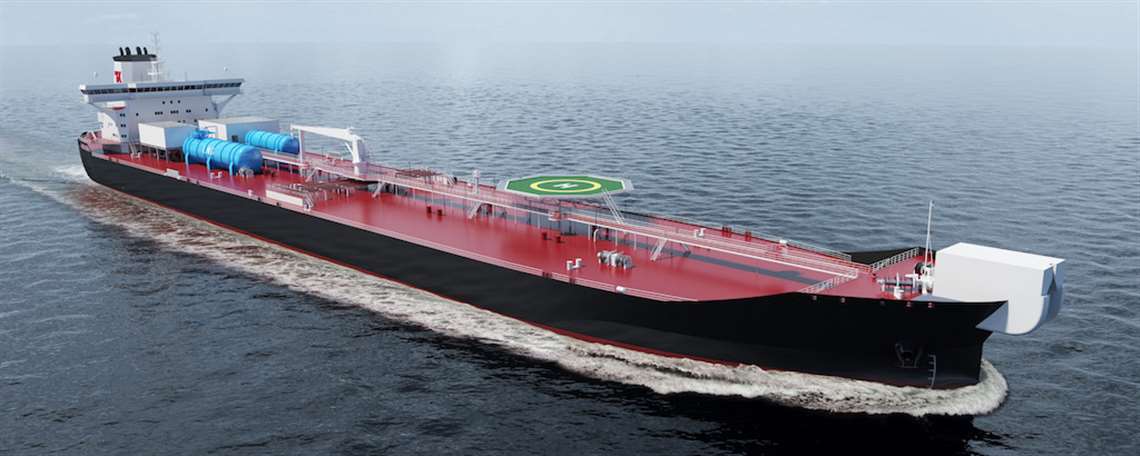A New Shuttle Tanker Approach From Wärtsilä
09 January 2018

Wärtsilä said a new shuttle tanker concept it is developing allows tankers to operate both on liquefied natural gas (LNG) as the primary fuel, and volatile organic compounds (VOC) as the secondary fuel.
The new solution, being worked on with Teekay, a provider of shuttle tanker services, aims to reduce annual emissions of CO2 equivalents by up to 42% compared to conventional shuttle tanker, the company said, or equal the emissions from 22,000 cars per vessel per year.
The concept has found support: Orders for four of these ‘next generation’ vessels will be built at the Samsung Heavy Industries (SHI) yard in South Korea and will feature a very broad assortment of Wärtsilä’s latest technology innovations, all of which are central to the concept’s overall performance gains, the company said. These orders with Wärtsilä, worth in total over €110 million, were booked in December 2017 and January 2018.
The main task for a shuttle tanker is to transport oil from offshore fields to land-based oil terminals. As shuttle tankers operate in offshore conditions, these vessels are the most advanced merchant vessels with unique varieties in operation modes including loading in dynamic positioning (DP) condition, transit in laden, unloading and ballast conditions.
All of these operating modes have their own requirements, but traditionally these requirements have led to equipment installed on board not being used efficiently in the various operation modes, the company said
Today’s shuttle tankers are equipped with direct propelled 2-stroke diesel engines running on heavy fuel oil (HFO) or marine gas oil (MGO) and the recovered LVOC— the environmentally harmful gas evaporating from the oil cargo tanks—has so far been considered as a waste product. The 2-stroke engines are mainly used for propulsion during transit, and the 4-stroke auxiliary plant is providing power for the extensive thruster system used during DP operation.
With an average of 100 tonnes of recovered LVOC per loading, the recovered amount could represent up to 30% the total fuel consumption of the shuttle tanker should the LVOC be used as fuel.
Teekay has replaced the conventional 2- and 4-stroke engine configuration with fully electric propulsion with generator sets driven by Wärtsilä 34DF 4-stroke dual-fuel (DF) engines.
With electric main propulsion motors and 4-stroke DF generating sets as the only power plant onboard the vessel, flexibility and overlapping functionality is achieved, the company said. This power distribution concept is part of Wärtsilä Low Loss Hybrid concept, reducing the total installed power on board from 26 to 23 MW with further reductions in fuel consumption and resulting in an increased overall efficiency of the vessel, according to the company.
To achieve full SECA and NECA compliance, the new shuttle tanker will be further equipped with Wärtsilä LNGPac to enable operation in gas mode throughout the shuttle tanker operation with LNG as primary fuel for the engine.
STAY CONNECTED




Receive the information you need when you need it through our world-leading magazines, newsletters and daily briefings.
POWER SOURCING GUIDE
The trusted reference and buyer’s guide for 83 years
The original “desktop search engine,” guiding nearly 10,000 users in more than 90 countries it is the primary reference for specifications and details on all the components that go into engine systems.
Visit Now
CONNECT WITH THE TEAM









